Still life #2
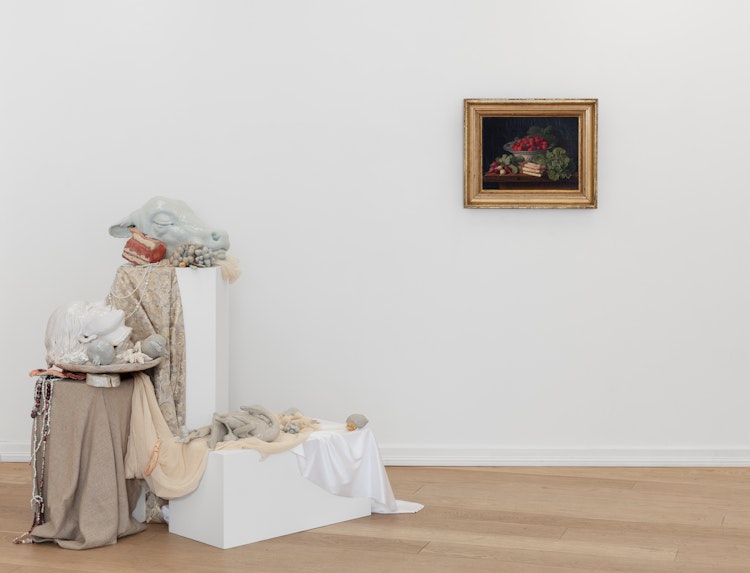

William Hammer, Christian Gravningen, Hilde Honerud, Ingri Haraldsen, Lin Wang, Nellie Jonsson, Tor Erik Bøe, Sidsel Bonde.
__
If we look at art history through a contemporary lens, the still life genre is an interesting enchanted mirror for the kind of reality we now find ourselves to be in. The Danish artist William Hammer's Still Life with Strawberries and Vegetables (1848) was created for a class that did not have to worry about hunger, which was an advantage since aesthetic pleasure is only possible when private sensations of desire and hunger are overcome, according to Immanuel Kant. Lin Wang effectively destroys the idyllic notion in her sculptural still life, where a human head is presented equally with a cow’s head. In the Anthropocene age, we are so deeply involved in nature's cycle with industrial food production and human depletion of natural resources that we can no longer suppress neither our own hunger, animal suffering or nature with bourgeois taste or aesthetic distance.
Today, moreover, money and exclusivity are the underlying barometers of taste refinement, not "playing with intellectual categories", which Kant thought was so thrilling. Prices are becoming more important than the actual things all across the board, not just for the upper classes, as Tor Erik Bøe comments in his "still life’s", where receipts for food purchases become central, not the food products themselves. Documentation is more important than the actual. Showing experiences to others is more important than understanding how our experiences alter us.
It is tempting to think that today's distress and unrest force the essential, but crises do not necessarily create an understanding of what we really need. In one of Hilde Honerud's photographs, we see two hands being sprinkled with a white fluid, which could be a milk product or hand soap, but which almost pornographically splashes and flows between the fingers. In a second image, where we see a jar with equivalent white contents, the thing multiplies in a vibrating mist of imagination. Even if food is no longer conveyed as intellectual pleasure, as in Hammer's painting, it is nevertheless an arrangement that connects to a collective dream world rather than our actual needs. The Slovenian philosopher Slavoj Zizek claims that what creates desire in us is not some hidden, private impulse, but rather obedience to the collective fantasies of what is desirable, that we find in advertising, films and books. Coke is it, says the advertisement. Although it is highly uncertain what this "it" is, it marks the very focal point of our desire, he claims.
Nevertheless, perhaps that is why art can be an entrance to something other than the magic dust of capitalist culture, such as in Christan Gravningen's post-pop paintings. They show ordinary brands, but the painterliness carries with it an impulse of reality: perhaps the brushstrokes and pigments create a new anchoring for these goods as something beyond advertising, thus reconnecting the viewer with something we actually need? Also, in Nellie Jonsson's sculptures of food, the imagination is broken, since the food appears as something artificial, like a sculpture, and thus makes us think more carefully about what we see without being seduced by hunger or advertising. Such paths of thought find their most distinct expression in Sidsel Bonde's sculpture Aks i øyenhøyde (2021), where the grain - the food - is abstracted from the cycle of fantasy images: form and content are united in a minimum common multiple for reality as an object of thought and real needs.
It's as if what really matters, is something we have to dig up again from the depths of the artificial soil that accumulates around us. If we dig deep enough, we can find something really valuable, like child's play, which Ingri Haraldsen has delved into in Stemmeløs lekeplass(2023), which showcases old toys depicting animals. Perhaps that is what the modern interpretation of the Still Life-tradition can help us with: to stand still, wonder, tolerate ambiguity, wait to eat, wait to conclude, wait to post an update on some digital platform.
/ Exhibition text by Kjetil Røed


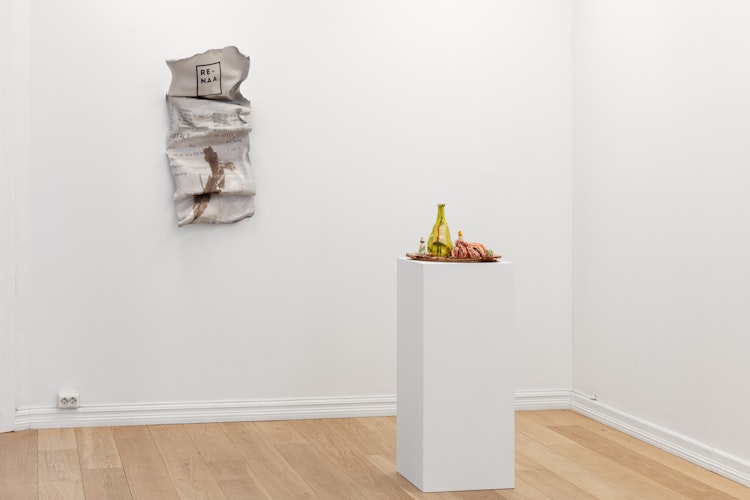
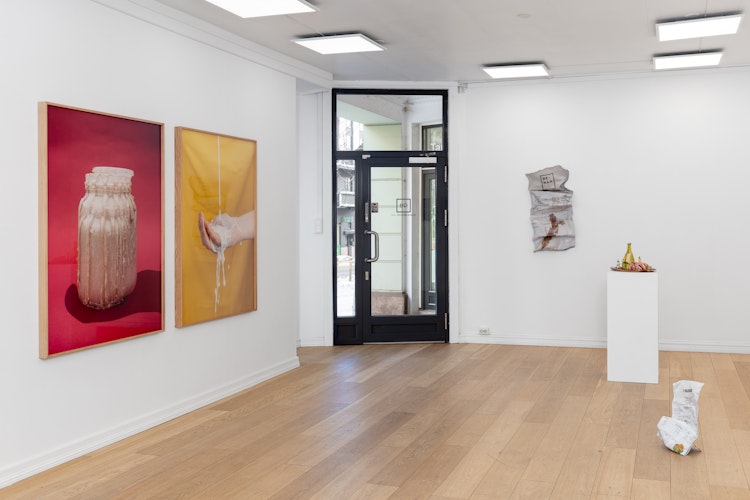
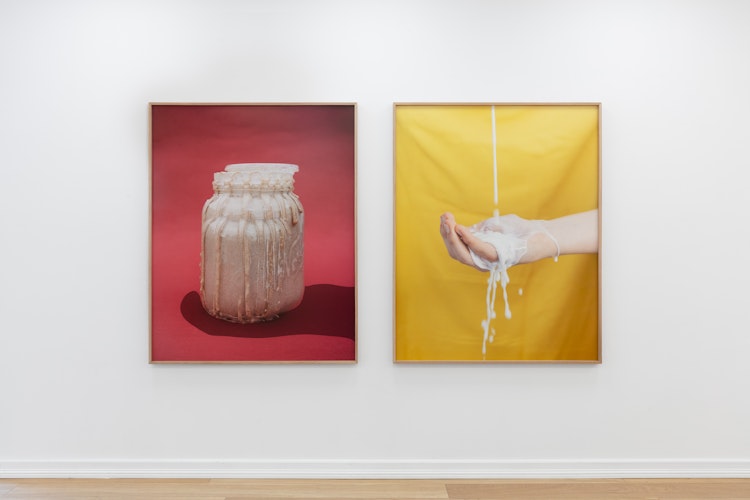


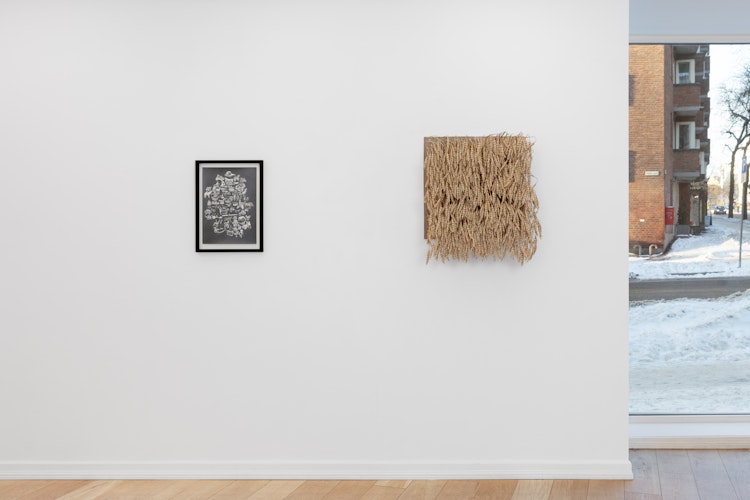


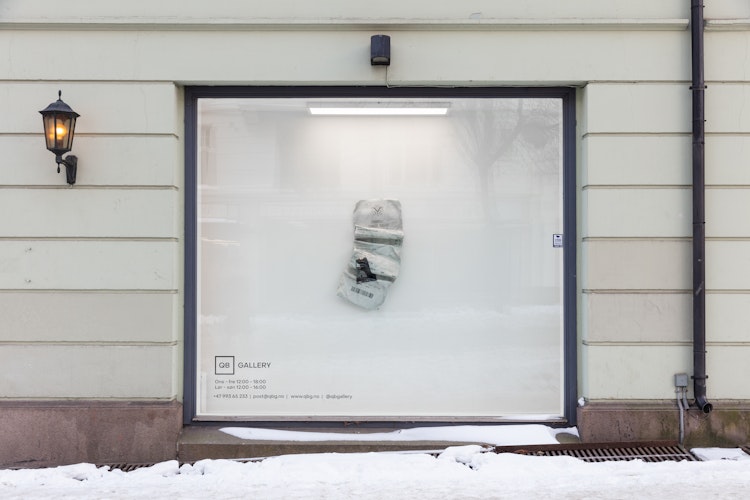
What are you looking for?